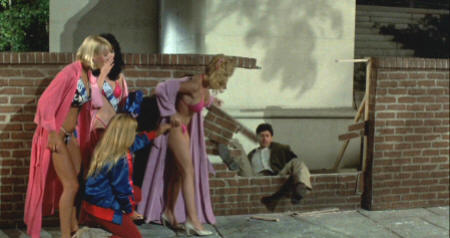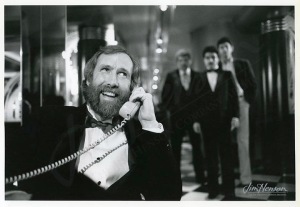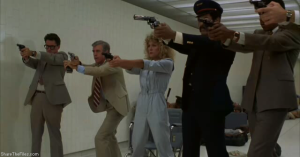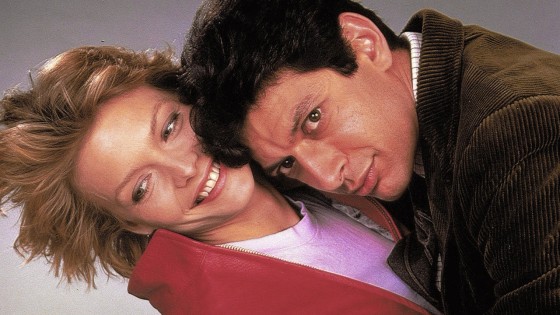Well it was a full evening and although the T.A.M.I. Show was the film for the night, there were several other elements to make this a full night of entertainment and information. The American Cinematheque is presenting a series of films on early Rock and Roll over the course of four nights. This was the presentation scheduled for last night.

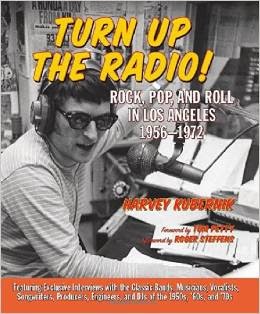
In addition to the screening, before the movie, legendary music journalist and historian Harvey Kubernik was going to be in the lobby, signing copies of his latest book on the L.A. music scene. The tome is a sprawling look at the music era in the City of Angels from 1956 to 1972. It is filled with pictures and stories and historical tidbits that should wet the appetite of any Rock fan out there. I was not able to see on the Cinematheque site whether it was going to be available for purchase at the show, so to make sure I did not show up empty handed, I bought one on line a week before the event. I felt a little bad because Larry Edmonds Bookstore was there with several copies for sale and I cheated them out of the chance to get my money. I'd have been happy to support that local institution had I known. There was an advantage to getting the book early however, and that was that I could get through the foreword, written by Tom Petty, and the first couple of chapters before I got a chance to meet Mr. Kubernik. He could not have been nicer and he shared stories with several fans who were lined up to get their books (and even those who did not buy a book).
 |
| Signing my copy even though I bought it on-line |
As a bonus, Eric from Hollywood Book and Poster, a store that I have haunted since the late seventies, was also in the lobby, selling pictures of Rock acts, posters from Rock shows of the era, and old copies of music magazines from the late sixties. He was also sharing stories about Rock acts that he had seen and told one about Lesley Gore, who had had seen in concert recently. He told me that after 37 years and three Hollywood locations, they were finally closing up shop in the real world because the rents were so high. He did say they were planning some events for the end of the year so I hope to be able to report back on some of those before January comes and their store only exists in cyberspace.
The biggest pleasure of the evening was getting to visit with my Southern California blogging colleague Michael from "
It Rains...You Get Wet". We connected through the defunct "Fogs Movie Reviews" and share some local history between us. I'd met him in person earlier this year at
another event at the Egyptian Theater, and it was his Facebook notice that had alerted me to this evenings event. Michael sat with us in the back row and before the movie started we talked about some other musical films that have been in theaters lately. Both of us are enthusiastic about the James Brown biopic, "
Get On Up". We also liked the screen version of "
Jersey Boys" with certain reservations. I will be contributing to the Blogathon on Steven Spielberg that he is co-hosting on his site along with Aurora of
CITIZEN SCREENINGS aka
@CitizenScreen and Kellee of
OUTSPOKEN & FRECKLED aka
@IrishJayhawk66. He asked about the post I was working on, and my daughter Amanda will also be posting something if she can get it done in time. She was with us and chirped in on an interesting subject. Apparently the Alamo Drafthouse is going to open a location here in downtown Los Angeles, and she said it will be directly connected to the subway system, so you won't even have to leave the station to make it to the new venue. It was a congenial halfhour begore the movie started.
The movie was introduced by director John Landis, the man responsible for "
Animal House" and "An American Werewolf in London". As a thirteen year old kid, he actually attended the T.A.M.I. concert at the Santa Monica Civic Auditorium. He told a couple of stories about that experience but he was coming back after the movie for a discussion so he kept the intro as short as he could. The movie started and right away you could get a sense of excitement because the volume was up and the audience at the actual concert was screaming like crazy. There was a huge amount of energy being expended by the mostly teen audience in 1964. The show was filmed as if it was being shot for live television using four cameras with the action being directed from a production booth. The concert was shot over two days and all the performers were there for both days of the live action.
The show opens with a bus ride where the performers are cutting up as they make their way to the venue, there is also some street action as the hosts of the show "Jan and Dean" skateboard their way to the auditorium. Chuck Berry is the first performer and he plays it loud and loose. As he is doing his version of his song "Maybellene", "Gerry and the Pacemakers" segue way into their take on the song. Gerry had quite the rakish smile and seemed at times to be flirting with the girls in the audience. Chuck Berry and the Pacemakers traded songs for several moments and were joyfully joined on stage by a band of dancers that were choreographed in a variety of 60s style dance moves. Most of the time the moves seemed enthusiastic and an extension of the performance, once in a while they were obtrusive and distracting. The dancers were featured in many of the performances but not all of them.
Smokey Robinson and the Miracles show up and are closely followed by Marvin Gaye. These two acts demonstrate to everyone what "soul" is, at least in it's romantic sense. It's amazing how great everyone in the show sounded despite all the screaming and the fact that it was live. This was well before the time when artists "sweetened" their vocals with backing tracks or fixed stuff up in post. These were talented singers and they were professionals who all had a different way of entertaining. There were back up singers and band choreography and it looked like they wanted to be there. Marvin had on what looked like a set of short, white tails and he looked snazzy. Most of the show is availible in clips on line and you can easily find them and see what I am talking about. The thing that was most distinct to me last night was how the audience in the theater was responding to the movie. Several performances received applause as if the acts were right in front of us. There wasn't any screaming but there were a lot of murmurs of approval.
John Landis and the director of the T.A.M.I. show itself, Steve Binder, in their talk at the end of the film, both pointed out that at the time, the biggest star of the show was Lesley Gore. Her half dozen songs were a knockout and her voice was clear and strong. Compared to some of the young women who are passing themselves off today as singers, she stands out like a loud, on key note. Her set was the close of the first nights concert and all the acts came out on stage to perform and dance during her last song. It turns out that Binder wanted people to know that he was not simply inserting performances into the show, but that it was a live performance and by having everyone on stage at the same time, the movie audience would know that.

"Jan and Dean" and "the Beach Boys" open the second half of the show with several surfing hits that fit the times. The harmonies for the "beach Boys" were wonderful but the show matked one of the last times that Brian Wilson sang on stage with the band, Wilson subsequently retreated to the studio to do his most creative work. All of the old people like me in the audience knew the stripped shirt look of the band that is featured here and is currently being parodied in cartoon form by hot dogs in Weinerschinzel TV ads. Billie Kramer is up next and he sings a song "Little Children" that has lyrics which today, would be interpreted in a very different way. It is unfortunate that the contemporary meaning will be obscured by the audience's more modern connotative meaning. Mr. Binder said in the talk at the end of the evening, that when he did a DVD commentary for the film, he was asked about whether there were any performances that he was disappointed in. He recorded and it was published on the disc, that he thought Kramer was a little nervous and in danger of being off key at times. He then told us that he got a call from Billy Kramer, who he did not know and that he immediately apologized for his remarks. Later Kramer and his wife spent a day with the Binders and all seems to be forgiven.
Next up come "The Supremes", not to shabby eh? All of the bands seemed to be on that scale, with the exception of "The Barbarians" a newly formed band that had one song in the show. I'd never heard of them before but the drummer seemed to be quite the character with a lot of personality. Apparently he was also missing a hand and had a prosthetic to use while drumming.
Having recently seen "
Get on Up", I was familiar with some of the back story on James Brown's performance. Having seen clips on TV is not the same as watching James on the big screen. The audience in our theater was electrified by this fifty year old performance. Everyone laughed at the theatrics and shouted for joy when the Godfather of Soul got up on the good foot and danced. His passionate singing style and showmanship won everybody over and the crowd reaction was loud. No wonder the Stones claimed that the worst move they ever made was following Brown on this show. Mick and the boys were great but while people are singing "Moves Like Jagger", they should see the contrast between the two stars here. Mick was fine but in comparison he looked like he was just streching and did not have the energy to keep the audience going. All the girls in 1964 were still loving it and the band sounded good, so they had nothing to be ashamed of.
 |
| My Girls liked the show too. |
Steve Binder mentioned in the conversation after the film that James Brown would not rehearse the act. He told Binder to simply follow the action and that he would know what to do with the camera then. Fortunately, Binder had the cameramen linger at a couple of spots or they'd have missed some of The Godfather's moves. John Landis is an avuncular host and tried to keep the discussion lively, but it did seem at times as if he was rushing to get to a point that was the next thing to talk about. Sometimes he stepped on the punchline of a story or mis-remebered an event and Binder would correct him. Binder was very generous with his time and had a bucket load of stories to tell. Since he also directed the "Elvis 68 Comeback Special", we were treated to some insider tales there as well. I remembered he had been a guest on the Mark and Brian Radio program several years ago, talking about the Elvis special. We got some dirt on Colonel Parker and diven that this is Elvis Week coming up, it was a little sad. He also discussed a well known incident concerning Petula Clark and Harry Belefonte in her TV Special. Again, there was a lot of backstage juice being spilled on our behalf.
I would strongly urge anyone who is a fan of Rock music to seek out the T.A.M.I. Show and spend a couple of hours with the geniuses of a half century ago. Sometimes the moments will seem quaint and old fashioned but at other times, the singers will kick you in the gut and demand your attention. Concert films that have been shot since this came out have used similar techniques to track the performers. Double exposure and diffused lenses (accomplished with the use of some Vasaline), and a constantly moving backstage performance are all standards of big pop shows these days, and this is where it all seems to have started.They introduced some of the dancers who came out for the show last night and one of the back up singers from the Blossoms. It was a pretty great experience and I consider myself lucky to have been there.




